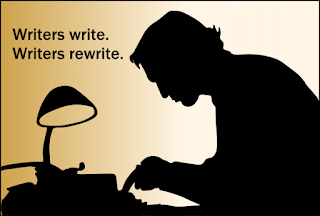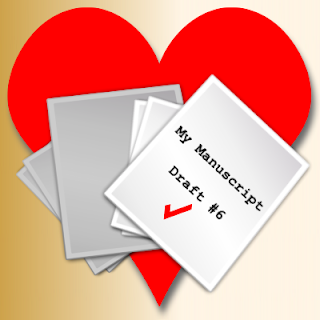 |
View larger image: Right click;
then left click "Open link in new
window." Zoom to 200% or
preferred size.
|
Breaking up long or medium-length chapters into shorter scenes is a sure way to add drama to your fiction and flair to your nonfiction—not to mention enhanced readability to whatever you write.
Scenes and physical structure
All but the shortest chapters can benefit from being divided into scenes. Here's why:
Scenes look good.
At the most basic visual level, breaking up chapters into scenes creates white space and makes manuscript or book pages look more attractive and inviting. Physically indicate a new scene by entering extra line spacing or, preferably for greatest effect, by adding a simple textual divider or small graphic to most clearly show the end of one scene and the beginning of another.
Examples of textual dividers
Three-em dash: ———
Five or six underlines: ______
Three asterisks: ***
Section character: §
Hash character: # Don’t use three hash characters (###), as this is reserved for the end of the book.
Examples of graphic dividers
 |
Some graphic dividers to indicate scenes within book chapters.
|
Scenes add to readability and impact.
 |
| Divide chapters into scenes for any or all of readability, drama, suspense, emphasis, and clarity. |
For all readers, the space between scenes is a physical representation on the page of a pregnant pause or deep breath or long moment of tension, any of which can elevate the drama and suspense of episodes within chapters.
Scenes in novels and creative nonfiction
Beyond their positive effect on the appearance and readability of a novel or work of creative nonfiction (memoir, biography, or other true story), scenes play crucial roles in the narrative structure. Every novel is a world unto itself, and while chapters are the main territories within that world, scenes within chapters are the signposts that keep readers oriented and engaged.
Scenes help readers navigate the unfamiliar landscape of each new novel or true story they read.
Within chapters, make a new scene to signal one or a combination of the following:
- Shift in point of view (POV): rule of thumb—one POV per scene.
- Major change of locale: for example—different city or country, across town, shift to another character’s home or workplace; generally, a character walking from one room to another or other minor changes of locale do not necessarily call for a new scene.
- Significant passage of time: this might mean years or a shorter duration—days or even hours. Plot requirements and writer's instinct determine what is significant and merits a new scene.
Sections in expository nonfiction
In expository nonfiction, dividing chapters into sections (the equivalent of scenes in fiction) not only aids readability but can add emphasis and impact to your content in self-help, motivational, how-to, and other informational books.
Make a new section to show the following:
- Major turn of thought.
- New topic.
- Sidelight or elaboration on the current thought or topic.
In expository nonfiction a new section can be signaled by using textual or graphic dividers such as those shown above. Usually, though, it is most effective to use subheads to indicate new sections and the particular topic or subtopic to be covered in each.
Cultivate scene sense
Like paragraphing, deciding exactly when, where, and why to end one scene or section, and to begin another, has an element of subjective judgement call involved. Seasoned authors develop a keen feel for the scene or section. It can therefore be helpful to revisit your favorite authors and study their handling of scenes or sections. This technique and your own good judgement add up to the common sense of scenes and, ultimately, to the creation of functional, marketable, and memorable books.






